- Why Leaf Fertilisation Is Important for Tomatoes
- 1. Direct Nutrient Absorption:
- 2. Targeted Nutrition:
- 3. Rapid Response:
- 4. Increased Absorption Efficiency:
- Benefits of Leaf Fertilisation
- 1. Rapid Nutrient Absorption:
- 2. Targeted Nutrient Delivery:
- 3. Improved Plant Health:
- 4. Increased Nutrient Efficiency:
- 5. Supplemental Feeding:
- Choosing the Right Fertiliser for Leaf Application
- 1. Balanced Fertilisers
- 2. Liquid Fertilisers
- 3. Slow-Release Fertilisers
- 4. Organic Fertilisers
- 5. Compatibility and Safety
- When to Apply Leaf Fertiliser
- Early Stages
- Vegetative Stage
- Flowering and Fruit Set
- Maintenance
- Proper Techniques for Applying Leaf Fertiliser
- How Leaf Fertilisation Can Boost Tomato Yields
- Benefits of Leaf Fertilisation
- Effective Leaf Fertilisation Techniques
- Conclusion
- Common Mistakes to Avoid When Applying Leaf Fertiliser
- 1. Applying too much fertilizer
- 2. Applying at the wrong time
- 3. Neglecting to dilute the fertiliser
- 4. Applying in unfavorable weather conditions
- 5. Ignoring plant health and stress
- 6. Focusing only on leaf application
- 7. Not monitoring plant response
- 8. Using incompatible fertilisers
- Tips for Strengthening Tomato Plants through Leaf Fertilisation
- Leaf Fertilisation: An Easy and Cost-Effective Solution
- Why Choose Leaf Fertilisation?
- How to Perform Leaf Fertilisation
- Conclusion
- “Question-Answer”
- How can leaf fertilisation help boost tomato yields?
- What nutrients are commonly supplied through leaf fertilisation?
- Can leaf fertilisation be used in conjunction with soil fertilisation?
- How often should leaf fertilisation be done for tomatoes?
- Are there any potential risks or precautions to consider when using leaf fertilisation for tomatoes?
- “Video” Making Tomato Plants 10x more Productive
Tomatoes are a popular and versatile crop that can be grown in a variety of climates. Whether you’re a seasoned gardener or just starting out, one thing is certain: leaf fertilisation is a simple and effective way to boost yields and strengthen your tomato plants.
Leaf fertilisation involves applying nutrients directly to the leaves of plants, bypassing the root system. This method allows for more efficient absorption of nutrients and can help plants overcome nutrient deficiencies quickly. By providing the necessary nutrients directly to the leaves, you can ensure that your tomato plants are getting exactly what they need to grow and produce plentiful, healthy fruit.
Leaf fertilisation is particularly beneficial for tomatoes as they have a high demand for nutrients, especially during the fruiting stage. By providing the right balance of essential nutrients, you can help your tomato plants reach their full potential and increase the overall yield.
To start leaf fertilisation, you will need a liquid fertilizer solution that is specifically formulated for tomatoes. These solutions are readily available at garden centers and can be easily applied using a sprayer or a watering can with a fine mist nozzle. It’s important to follow the instructions on the fertilizer package and apply the solution evenly to both the upper and lower surfaces of the leaves.
Leaf fertilisation should be done regularly throughout the growing season, especially during periods of high nutrient demand, such as when the plants are flowering and setting fruit. This method is a great addition to regular soil fertilization and can significantly improve the overall health and productivity of your tomato plants.
Why Leaf Fertilisation Is Important for Tomatoes
Leaf fertilisation is an important technique for promoting the growth and overall health of tomato plants. By providing essential nutrients directly to the leaves, this method ensures that the plants can efficiently absorb the nutrients and use them to their full potential.
Here are several key reasons why leaf fertilisation is important for tomatoes:
1. Direct Nutrient Absorption:
When fertilisers are applied to the soil, the nutrients must be taken up by the roots before they can be utilized by the plants. Leaf fertilisation bypasses this process by directly providing nutrients to the leaves, allowing for quicker and more efficient absorption. This helps ensure that the plants receive an adequate supply of essential nutrients, even if the soil may be lacking in certain elements.
2. Targeted Nutrition:
With leaf fertilisation, nutrients can be specifically targeted to the parts of the plants that need them the most. By applying fertilisers directly to the leaves, growers can address nutrient deficiencies or imbalances in a more precise manner. This helps to improve the overall health of the plants and maximise their productivity.
3. Rapid Response:
Leaf fertilisation provides a quick response compared to traditional soil fertilisation. The nutrients are absorbed directly through the leaves and can start taking effect almost immediately. This is especially beneficial during periods of increased nutrient demand, such as the flowering and fruiting stages of tomato plants. By providing an immediate boost of nutrients, leaf fertilisation can help to support optimal growth and development.
4. Increased Absorption Efficiency:
Studies have shown that leaf fertilisation can significantly improve the absorption efficiency of nutrients by tomato plants. When nutrients are applied to the leaves, they can be taken up by the plant more effectively than when applied to the soil. This is because the leaf surface is rich in microscopic openings called stomata, which facilitate nutrient uptake. By enhancing absorption efficiency, leaf fertilisation ensures that the plants can make the most of the nutrients provided, leading to healthier and more productive crops.
In conclusion, leaf fertilisation is an important technique that can greatly benefit tomato plants. By providing direct nutrition to the leaves, this method ensures efficient nutrient absorption, targeted nutrition, quick response, and increased absorption efficiency. Incorporating leaf fertilisation into the overall fertilisation program can help boost yields, strengthen plants, and improve overall crop quality.
Benefits of Leaf Fertilisation
Leaf fertilisation, also known as foliar feeding, is a simple and effective method to provide essential nutrients directly to the leaves of tomato plants. This technique offers several benefits that can help boost yields and strengthen the overall health of the plants.
1. Rapid Nutrient Absorption:
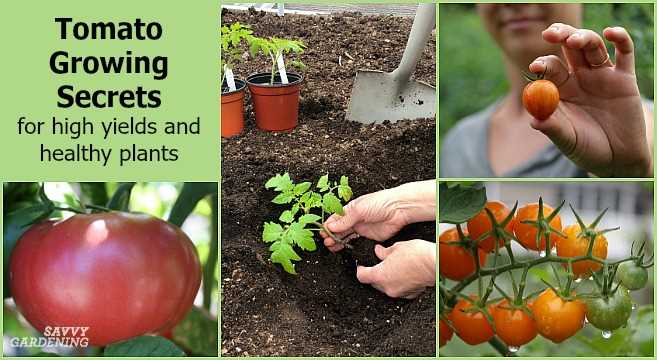
By applying fertilisers directly to the leaves, the plants can quickly and efficiently absorb the nutrients. This is because the leaves have a large surface area and thin cuticles, allowing for better nutrient uptake compared to the roots. As a result, the plants can better meet their nutrient requirements, especially during critical growth stages.
2. Targeted Nutrient Delivery:
Leaf fertilisation allows for precise and targeted nutrient delivery. It allows growers to apply specific nutrients that may be deficient or required in higher quantities, without affecting the overall soil composition. This targeted approach ensures that the plants receive the necessary nutrients directly, leading to optimal growth and development.
3. Improved Plant Health:
Providing a balanced nutrient supply through leaf fertilisation enhances the overall health and vitality of tomato plants. Essential nutrients such as nitrogen, phosphorus, and potassium help promote vigorous growth, strengthen root systems, and enhance disease resistance. Healthy plants are better able to withstand environmental stressors and produce higher yields of quality tomatoes.
4. Increased Nutrient Efficiency:
Leaf fertilisation improves nutrient-use efficiency by reducing nutrient losses through leaching and inefficient root uptake. This method ensures that a greater proportion of applied nutrients reaches the plants, minimizing waste and potential environmental impacts. It is particularly beneficial in soils with poor nutrient availability or in situations where nutrient uptake is impaired.
5. Supplemental Feeding:
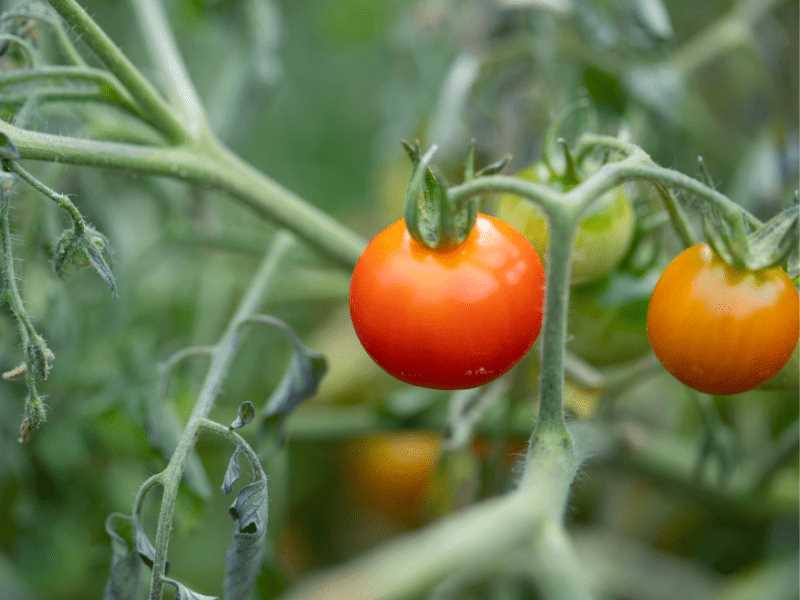
Leaf fertilisation can be used as a supplemental feeding technique in addition to regular soil fertilisation. It provides an extra nutrient boost during critical growth stages or when plants show signs of nutrient deficiency. This flexibility allows growers to tailor their fertilisation program to meet the specific needs of their tomato plants, resulting in healthier and more productive crops.
In summary, leaf fertilisation offers numerous benefits for tomato plants. It allows for rapid nutrient absorption, targeted nutrient delivery, improved plant health, increased nutrient efficiency, and supplemental feeding. By incorporating leaf fertilisation into their cultivation practices, growers can optimize the growth, yield, and overall quality of their tomatoes.
Choosing the Right Fertiliser for Leaf Application
When it comes to fertilising tomato plants through leaf application, choosing the right fertiliser is crucial to ensure healthy growth and maximum yields. Leaf application allows for the direct absorption of nutrients, bypassing the soil and root system. This method is especially effective for quickly correcting nutrient deficiencies and providing an immediate boost to plant health.
1. Balanced Fertilisers
The first consideration when choosing a fertiliser for leaf application is to select a balanced formula. A balanced fertiliser contains a mix of essential macronutrients and micronutrients in the correct ratios. These nutrients include nitrogen (N), phosphorus (P), potassium (K), calcium (Ca), magnesium (Mg), and trace elements like iron (Fe), manganese (Mn), and zinc (Zn).
Using a balanced fertiliser ensures that all the necessary nutrients are delivered to the plant through leaf application, promoting overall growth and development.
2. Liquid Fertilisers

Liquid fertilisers are the most suitable option for leaf application as they are easily absorbed by the plant’s leaves. They can be applied through foliar sprays or drenching, allowing for efficient nutrient uptake. Liquid fertilisers also provide a quick response, making them ideal for addressing immediate nutrient deficiencies.
Additionally, liquid fertilisers can be customized by adjusting the concentration of nutrients to meet specific plant needs.
3. Slow-Release Fertilisers
While liquid fertilisers are commonly used for leaf application, slow-release fertilisers can also be used effectively. Slow-release fertilisers, such as coated granules or pellets, provide a continuous supply of nutrients over an extended period. This ensures a steady and consistent nutrient uptake by the plants.
Slow-release fertilisers are particularly suitable for plants with longer growth cycles, as they provide a sustained nutrient supply without the need for frequent application.
4. Organic Fertilisers
Organic fertilisers are an excellent choice for those who prefer natural and sustainable gardening practices. These fertilisers are derived from organic sources such as compost, manure, or plant-based materials. They provide a slow-release of nutrients and improve soil fertility over time.
Organic fertilisers can be applied as foliar sprays or in liquid form, making them suitable for leaf application. They not only supply essential nutrients but also enhance soil structure, stimulate beneficial microbial activity, and promote overall plant health.
5. Compatibility and Safety
When selecting a fertiliser for leaf application, it is important to consider its compatibility with other products, particularly in the case of tank mixing. Some fertilisers may not be compatible with certain pesticides or growth regulators, leading to undesirable effects.
Additionally, it is essential to follow the manufacturer’s instructions and guidelines for safe and effective use of fertilisers. Over-application or using the wrong concentration can cause leaf burn or other adverse effects on the plants.
In conclusion, choosing the right fertiliser for leaf application is crucial for promoting plant health and maximizing yields. It is important to select a balanced formula, consider liquid or slow-release options, evaluate organic fertilisers, and ensure compatibility and safety. By providing the necessary nutrients through leaf application, tomato plants can thrive and produce bountiful harvests.
When to Apply Leaf Fertiliser
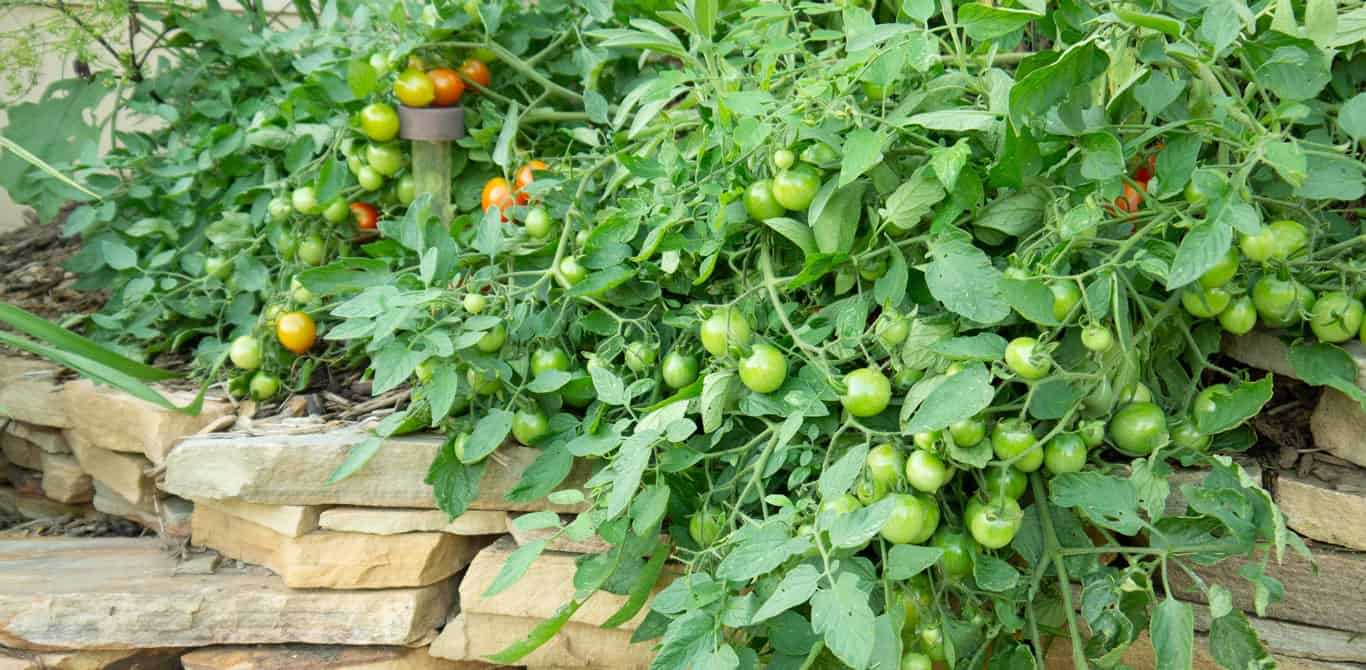
Timing is crucial when it comes to applying leaf fertiliser to tomatoes. Applying the fertiliser at the right time can ensure maximum absorption and utilization of nutrients, leading to healthier plants and higher yields.
Early Stages
During the early stages of tomato plant growth, it is recommended to start applying the leaf fertiliser when the first true leaves emerge. This is usually around 3-4 weeks after transplanting seedlings into the garden. At this stage, the plants are actively growing and establishing their root systems. Applying leaf fertiliser early can provide the necessary nutrients to support vigorous growth and development.
Vegetative Stage
During the vegetative stage, which follows the early growth stage, tomato plants focus on leaf and stem development. It is ideal to continue applying leaf fertiliser every 2-3 weeks to provide a steady supply of nutrients for healthy foliage growth. This is especially important for indeterminate tomato varieties that continuously produce new growth.
Flowering and Fruit Set
When tomato plants start to flower and set fruit, the nutrient demands change. The focus shifts from vegetative growth to fruit development. At this stage, it is crucial to provide the right balance of nutrients to support flowering and fruit set. Application of leaf fertiliser should be continued, but with a lower frequency, approximately every 3-4 weeks.
Maintenance
Throughout the growing season, it is important to regularly monitor the health of tomato plants and adjust the application of leaf fertiliser accordingly. If nutrient deficiencies or imbalances are detected, additional foliar feedings may be required. However, it is essential to follow the instructions provided with the leaf fertiliser product and avoid over-application, as this can lead to nutrient toxicity and plant damage.
| Growth Stage | Application Frequency |
|---|---|
| Early Growth | Weekly |
| Vegetative | Every 2-3 weeks |
| Flowering and Fruit Set | Every 3-4 weeks |
Proper Techniques for Applying Leaf Fertiliser
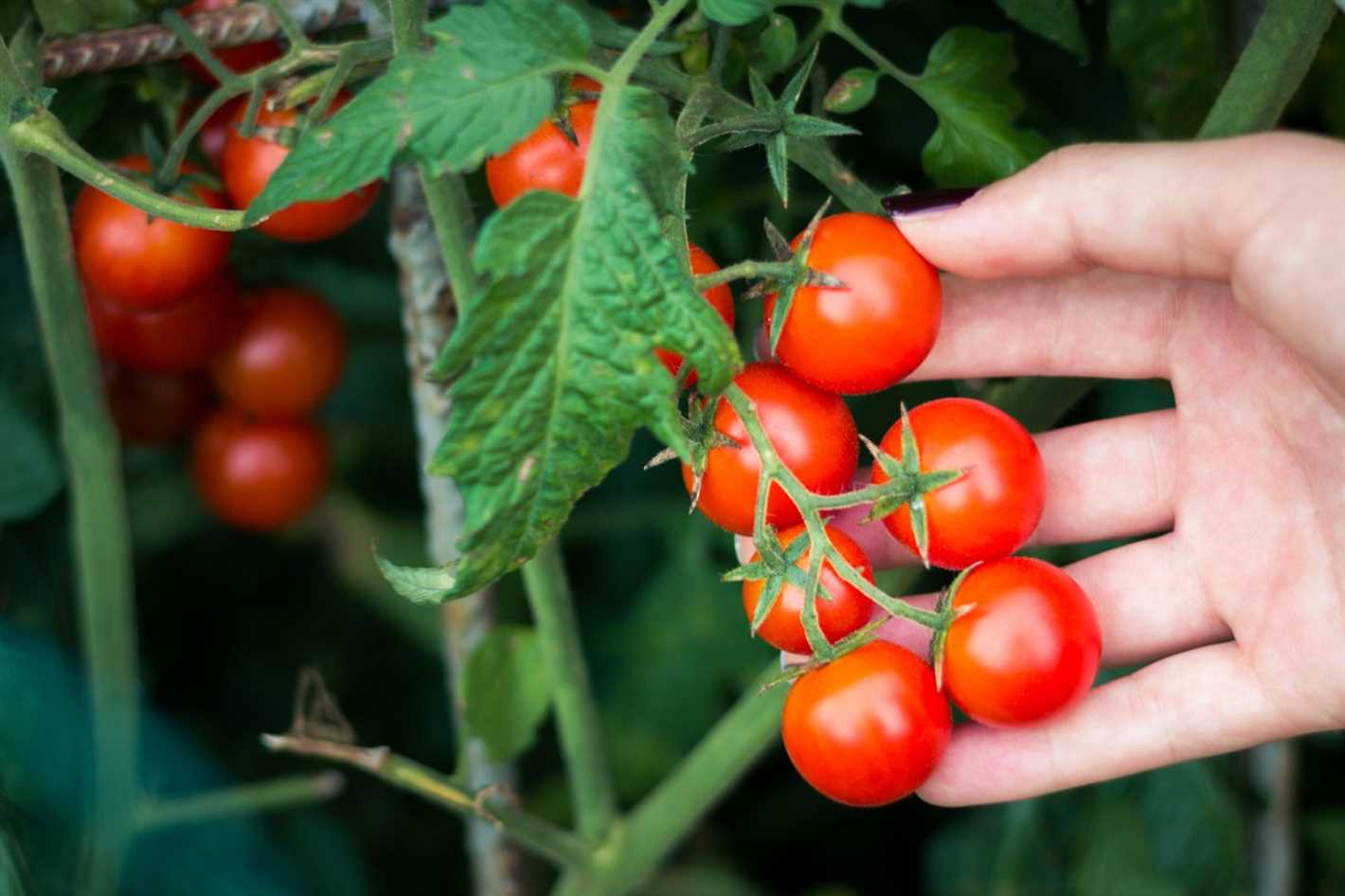
Applying leaf fertiliser to your tomato plants can be a simple and effective way to boost yields and strengthen the overall health of your plants. However, it is important to use the proper techniques to ensure that the fertiliser is applied correctly and efficiently.
Here are some tips to follow when applying leaf fertiliser:
- Select the right fertiliser: Choose a leaf fertiliser that is specifically formulated for tomatoes. Look for a balanced formula that contains essential nutrients such as nitrogen, phosphorus, and potassium.
- Dilute the fertiliser: Follow the instructions provided by the manufacturer to properly dilute the fertiliser. It is important to mix the fertiliser with water to ensure that it is applied evenly and at the correct concentration.
- Apply during the right time of day: It is best to apply leaf fertiliser during the early morning or late evening when the sun is not at its peak. This allows the plants to absorb the nutrients more effectively without the risk of leaf burn from intense sunlight.
- Apply on a calm day: Avoid applying leaf fertiliser on windy days, as this can cause the fertiliser to drift away from the plants and potentially harm nearby vegetation. Choose a day with calm weather to ensure that the fertiliser stays where it is intended.
- Apply evenly: Use a sprayer or a watering can with a fine nozzle to apply the leaf fertiliser evenly on the surface of the leaves. Make sure to cover both the top and bottom of the leaves, as this is where the stomata are located and where the nutrients will be absorbed.
- Avoid excessive application: While it is important to ensure that the leaves are adequately covered with the fertiliser, it is equally important to avoid overapplication. Excessive fertiliser can lead to nutrient burn and other problems, so be careful not to apply too much.
- Monitor for results: Keep a close eye on your tomato plants after applying the leaf fertiliser. Look for signs of improved growth, increased yields, and overall healthier plants. If you notice any negative effects, such as leaf discoloration or burning, adjust your application technique or switch to a different fertiliser if necessary.
By following these proper techniques for applying leaf fertiliser, you can ensure that your tomato plants receive the necessary nutrients to thrive and produce abundant harvests. Remember to always read and follow the instructions provided by the manufacturer for the best results.
How Leaf Fertilisation Can Boost Tomato Yields
Leaf fertilisation is a simple and effective way to enhance tomato yields and strengthen plants. By applying nutrients directly to the leaves, plants can quickly absorb the essential elements they need for growth and fruit production. This method of fertilisation can be especially beneficial for tomatoes, as they have a high demand for nutrients throughout their growing season.
Benefits of Leaf Fertilisation
There are several advantages to using leaf fertilisation on tomatoes:
- Fast Nutrient Absorption: When fertilisers are applied to the leaves, nutrients bypass the soil and are absorbed directly into the plant’s system. This means that the plants can quickly access the nutrients they need, leading to faster growth and improved fruit production.
- Targeted Nutrient Delivery: By applying fertilisers to the leaves, growers can target specific nutrient deficiencies or imbalances. This ensures that plants receive the precise nutrients they need for optimal growth, resulting in healthier plants and higher yields.
- Reduced Risk of Nutrient Loss: Nutrients applied to the leaves are less prone to being washed away by rain or leached out of the soil. This reduces the risk of nutrient loss and ensures that plants have a continuous supply of essential elements throughout the growing season.
- Enhanced Disease Resistance: Certain leaf fertilisers contain ingredients that help improve the plant’s natural defense mechanisms against diseases and pests. This can result in stronger, healthier plants that are better equipped to withstand common tomato diseases.
Effective Leaf Fertilisation Techniques
When using leaf fertilisers on tomatoes, it’s important to follow these effective techniques:
- Choose the Right Fertiliser: Select a leaf fertiliser that is specifically formulated for tomatoes. These products will contain the essential nutrients, vitamins, and minerals that tomatoes require for optimal growth.
- Apply During Ideal Conditions: Leaf fertilisers are most effective when applied during cooler hours of the day, such as early morning or late afternoon. Avoid applying when temperatures are high or when it’s raining, as this can lead to nutrient runoff.
- Spray Evenly and Thoroughly: Use a sprayer or spray bottle to evenly coat the leaves with the fertiliser solution. Be sure to cover both the top and bottom surfaces of the leaves to ensure maximum nutrient absorption.
- Repeat Application as Needed: Depending on the specific leaf fertiliser used, it may be necessary to repeat the application every few weeks or as directed on the product label. This will help maintain a steady supply of nutrients throughout the growing season.
Conclusion
Leaf fertilisation can be a valuable technique for boosting tomato yields and strengthening plants. By providing plants with targeted nutrition and enhancing nutrient absorption, growers can enjoy healthier plants and increased fruit production. When applying leaf fertilisers, it’s essential to choose the right product, apply during ideal conditions, spray evenly and thoroughly, and repeat applications as needed. By following these techniques, growers can maximise the benefits of leaf fertilisation for their tomatoes.
Common Mistakes to Avoid When Applying Leaf Fertiliser
Applying leaf fertiliser can be a simple and effective way to boost tomato yields and strengthen plants. However, there are some common mistakes that gardeners should avoid to ensure they get the best results from their fertilisation efforts.
1. Applying too much fertilizer
One of the most common mistakes gardeners make when applying leaf fertiliser is using too much product. Over-fertilisation can lead to nutrient imbalances and can actually harm the plants rather than helping them. It’s important to follow the recommended application rates and not exceed them.
2. Applying at the wrong time
The timing of leaf fertiliser application is crucial for optimal results. Applying fertiliser too early or too late in the growing season can be ineffective and wasteful. It’s important to follow the manufacturer’s guidelines and apply the fertiliser at the recommended stage of plant growth.
3. Neglecting to dilute the fertiliser
Some gardeners make the mistake of applying concentrated leaf fertiliser directly onto the plant without diluting it first. This can result in burning the plant’s leaves and causing damage. It’s essential to dilute the fertiliser according to the manufacturer’s instructions before application.
4. Applying in unfavorable weather conditions
Applying leaf fertiliser during extreme weather conditions, such as high temperatures or strong winds, can result in the product being ineffective or even causing harm to the plants. It’s important to choose a calm, mild day for the application to ensure proper absorption and prevent any damage.
5. Ignoring plant health and stress
While leaf fertilisation can help strengthen plants, it’s not a substitute for addressing underlying health issues or stress factors. Neglecting to address plant health problems such as diseases or pest infestations can hinder the effectiveness of leaf fertiliser. It’s important to diagnose and treat any existing issues before applying fertiliser.
6. Focusing only on leaf application
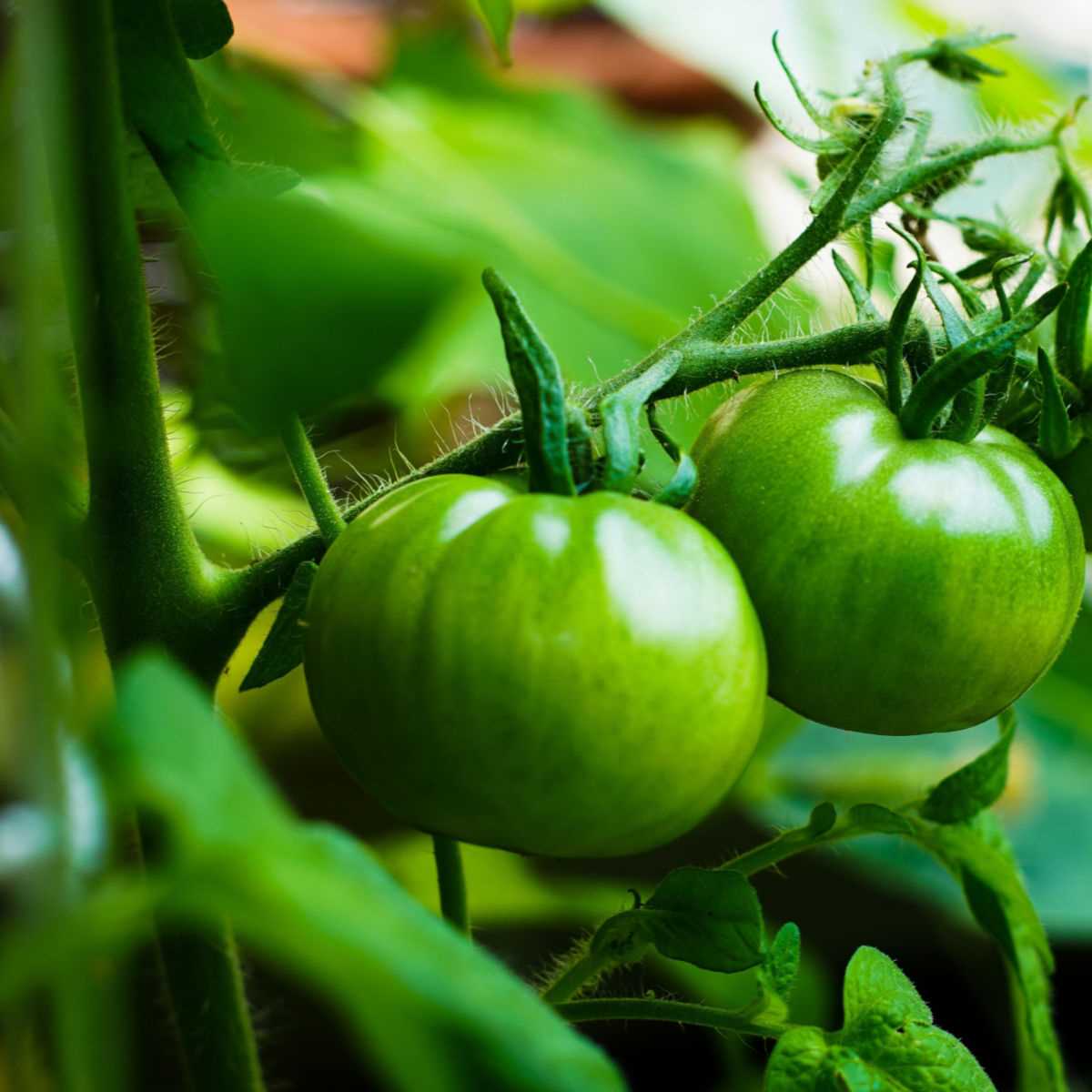
While leaf fertilisation can provide a quick nutrient boost to plants, it’s important not to neglect other aspects of plant nutrition. Roots also play a crucial role in nutrient uptake, so it’s important to incorporate a balanced fertilisation approach that includes both leaf and root applications.
7. Not monitoring plant response
After applying leaf fertiliser, it’s important to closely monitor the plants for any signs of improvement or adverse reactions. If the plants show signs of stress or nutrient deficiencies, adjustments may need to be made to the fertiliser application or other aspects of plant care.
8. Using incompatible fertilisers
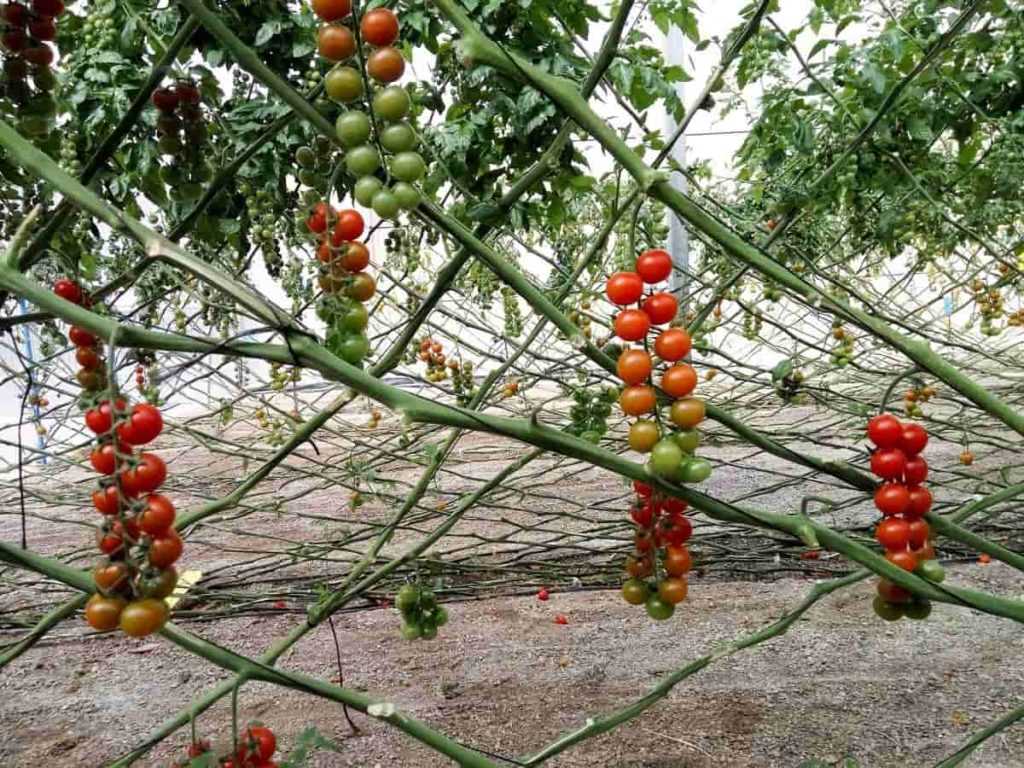
Finally, it’s important to use compatible leaf fertilisers that are specifically formulated for tomato plants. Using the wrong type of fertiliser or mixing incompatible products can lead to nutrient imbalances and plant damage. Always read the label and choose a fertiliser that is suitable for tomato plants.
Avoiding these common mistakes when applying leaf fertiliser can help ensure that tomatoes receive the nutrients they need for optimal growth and yields. By following proper application techniques and maintaining overall plant health, gardeners can achieve the best results from their fertilisation efforts.
Tips for Strengthening Tomato Plants through Leaf Fertilisation
Leaf fertilisation is a simple and effective method to boost the yields of tomato plants and strengthen their overall growth. By applying fertilisers directly to the leaves, the nutrients are absorbed more efficiently and can be quickly transported to the parts of the plant that need them the most. Here are some tips to help you successfully fertilize your tomato plants through leaf application:
- Choose the right fertiliser: Select a foliar fertiliser that is specifically formulated for tomatoes or vegetables. These fertilisers are usually rich in nutrients such as nitrogen, phosphorus, and potassium, which are essential for the healthy growth of tomato plants.
- Follow the instructions: Always read and follow the instructions provided by the manufacturer on the fertiliser packaging. Different products may have different application rates and recommended timings, so it is important to adhere to these guidelines to avoid over or under-fertilisation.
- Apply during the right time: The best time to apply foliar fertilisers is during the early morning or late evening when the temperatures are cooler and the leaves are not under direct sunlight. This helps to prevent the fertiliser from evaporating too quickly and ensures optimal absorption by the leaves.
- Mix the fertiliser properly: Dilute the fertiliser according to the instructions provided. Use a clean sprayer or a handheld bottle sprayer to apply the diluted fertiliser evenly on the leaves. Avoid using any equipment that has been previously used with pesticides or other chemicals.
- Focus on the undersides of leaves: The undersides of the leaves have stomata, which are small openings where the nutrients can be absorbed. When spraying the fertiliser, make sure to target the undersides of the leaves as well to ensure maximum absorption.
- Apply regularly but not excessively: Apply foliar fertilisers every 2-3 weeks during the growing season, starting from the early stages until the fruits start to ripen. However, avoid excessive application as it can lead to nutrient imbalances and phytotoxicity, causing damage to the plants.
- Combine with root fertilisation: Leaf fertilisation can be combined with traditional root fertilisation methods for optimal results. While leaf fertilisation provides quick nutrient absorption, root fertilisation ensures long-term nutrient supply to the plants.
By following these tips, you can effectively strengthen your tomato plants through leaf fertilisation and enjoy a bountiful harvest of juicy and healthy tomatoes.
Leaf Fertilisation: An Easy and Cost-Effective Solution
Fertilising tomato plants is essential for promoting healthy growth and improving yields. While traditional methods of fertilisation involve applying nutrients to the soil, leaf fertilisation offers a simple and effective alternative that can save time and money.
Why Choose Leaf Fertilisation?
Leaf fertilisation, also known as foliar feeding, involves applying nutrients directly to the leaves of the tomato plants. This method allows for the rapid uptake of essential elements, bypassing the need for root absorption. Here are some reasons why leaf fertilisation is a great option:
- Increased nutrient efficiency: By directly applying nutrients to the leaves, the plants can absorb them more efficiently. This results in faster and more effective nutrient uptake compared to traditional soil fertilisation methods.
- Targeted nutrient delivery: Leaf fertilisation allows for precise targeting of specific nutrients. This is particularly beneficial when certain deficiencies or imbalances need to be addressed.
- Reduced risk of nutrient leaching: Since the nutrients are applied directly to the leaves, there is minimal risk of leaching into the soil. This reduces the overall amount of nutrients required and prevents wastage.
- Quick response time: Leaf fertilisation provides a quick response and visible improvement in plant health. Nutrients are rapidly absorbed and utilized, leading to faster growth and increased yields.
How to Perform Leaf Fertilisation
Performing leaf fertilisation on tomato plants is a straightforward process that can be done using a foliar spray. Here’s a step-by-step guide:
- Select the right nutrients: Choose a balanced liquid fertilizer that is suitable for tomatoes. Look for formulations that contain essential macronutrients (nitrogen, phosphorus, potassium) as well as micronutrients.
- Dilute the fertilizer: Follow the instructions provided on the fertilizer packaging to determine the correct dilution ratio. Mix the fertilizer with water in a spray bottle or pump sprayer.
- Apply the fertilizer: Spray the diluted fertilizer onto the leaves of the tomato plants, making sure to cover both sides of the leaves. Apply early in the morning or late in the afternoon to avoid direct sunlight, which can cause leaf burn.
- Repeat as necessary: Repeat the leaf fertilisation process every 1-2 weeks throughout the growing season. Adjust the frequency based on the specific needs of your tomato plants.
Conclusion
Leaf fertilisation offers a simple and cost-effective solution for boosting yields and strengthening tomato plants. By directly applying nutrients to the leaves, you can improve nutrient efficiency, target specific deficiencies, and promote faster growth. Consider incorporating leaf fertilisation into your tomato plant care routine for optimal results.
“Question-Answer”
How can leaf fertilisation help boost tomato yields?
Leaf fertilisation can help boost tomato yields by directly supplying essential nutrients to the plant through its leaves. This allows for more efficient absorption and utilization of these nutrients, which can result in healthier and stronger plants with increased fruit production.
What nutrients are commonly supplied through leaf fertilisation?
Common nutrients supplied through leaf fertilisation include nitrogen, phosphorus, potassium, and various micronutrients such as iron, manganese, zinc, and copper. These nutrients are essential for plant growth, development, and fruit production.
Can leaf fertilisation be used in conjunction with soil fertilisation?
Yes, leaf fertilisation can be used in conjunction with soil fertilisation. While soil fertilisation provides nutrients to the roots, leaf fertilisation offers a complementary method of nutrient application that can provide additional benefits, especially in cases where plants may have nutrient deficiencies or when there is a need for quick correction of nutrient imbalances.
How often should leaf fertilisation be done for tomatoes?
The frequency of leaf fertilisation for tomatoes depends on various factors such as the specific nutrient requirements of the plants, the stage of growth, and the presence of nutrient deficiencies. Generally, it is recommended to apply leaf fertilisers every 1-2 weeks during the active growth phase of the plants, but it is important to refer to the instructions provided by the fertiliser manufacturer for specific recommendations.
Are there any potential risks or precautions to consider when using leaf fertilisation for tomatoes?
While leaf fertilisation can be an effective method, it is important to follow the recommended application rates and avoid over-fertilisation, as this can lead to nutrient imbalances or damage to the plants. It is also advisable to avoid applying leaf fertilisers during periods of extreme temperatures or when the plants are under stress, as this can further stress the plants and potentially cause harm. As with any fertilisation method, it is best to read and follow the instructions provided by the manufacturer.







